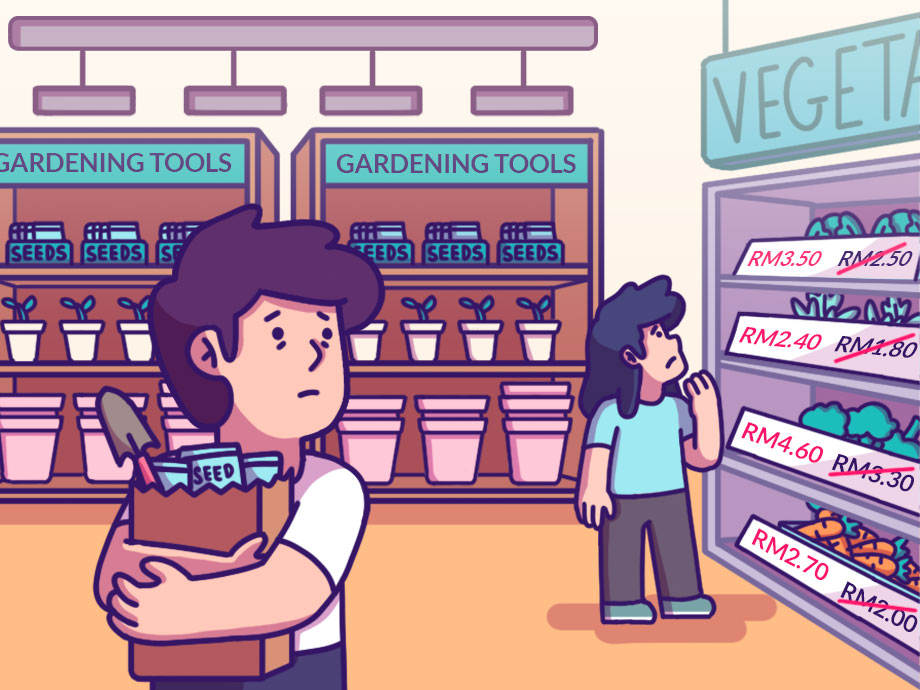Budgeting | Financial Planning | Personal Finance | Article
Simple Ways to Save on Your Meals Without Resorting to Instant Noodles
by Ooi May Sim | 4 Oct 2022

Mention cutting back on meal expenses as a way to save more money and the first thing that comes to mind is that you’re going to have to live off instant noodles and white bread. The good news is that needn’t be the case.
There are ways you can save money on food, without compromising on health or flavour.
And they aren’t too difficult to execute.
Cook meals at home and in bulk
We all know that dining out is expensive. Hence, cooking at home more often is one of the easiest ways to stretch our ringgit.
But the problem is that cooking can be extremely time consuming, and for many 9 to 5 workers, it is difficult to find the time or energy to cook and prepare two to four meals a day.
If this is you, perhaps you should try cooking in bulk so that you can enjoy the savings of cooking your own meals without slaving over the stove every day! The idea behind this is that you make big batches of food, portion it, then freeze it for later. When you are hungry, pop it into a microwave oven or a pan and heat it up for a few minutes.
Aside from saving time, cooking in bulk is also cost effective. Buying ingredients in bulk is cheaper – if you buy your groceries from the pasar, you can get it at a cheaper rate when you buy in larger quantities. Plus, the price of a big tin of canned tomatoes will always be cheaper (weight for weight) than a smaller one.
And as you will have a ready supply of cooked dishes in your fridge, the chances of you ordering takeaway are minimised.
With proper planning, this method also minimises food wastage. You’ll cook up all your ingredients at one go instead of leaving them to wilt in the fridge because you forgot or didn’t have time to cook it.
Some good bulk dishes you can start with are curries, soups, stews, and stir-fried leafy vegetables. Try cooking different dishes, then freezing it so you’ll have an assortment of dishes to choose from throughout the week.
Related
Buy from the discounted section
Most supermarkets have a shelf for discounted items that are reaching their expiry date soon. Make a detour there for cheaper ingredients.
However, as these items might go bad soon, remember to use it quickly or freeze it so it can be cooked another day, especially if it’s fresh ingredients.
For example, with vegetables, wash them, chop them up and freeze them in ice cube trays. When you’re ready to cook it, just pop them into your pan and cook it. It’s also an inexpensive and convenient way to increase your vegetable intake.
Although freezing may alter the texture of vegetables, its vitamin content remains intact, so you’ll still be getting all the veggie goodness.
Substitute meat with tofu, tempeh, pulses and legumes
Meat is expensive. Whether it’s fish, chicken, beef, pork, lamb, duck or goat, eating meat is costly.
Furthermore, meat prices have been rising recently due to labour and food shortages, political conflict, and supply and demand issues. Take chicken as an example – in July, the government raised the ceiling price of chicken from RM8.90 per kg to RM9.40 per kg. That means, a 2kg bird will cost you RM18.80 instead of RM17.80.
To save costs, consider switching to plant alternatives such as tofu, pulses and legumes. These come at a fraction of the cost of meat and are packed with protein, iron and fibre that your body requires.

To acclimatise yourself to your new diet, you can start by going meatless one day a week (ie: meatless Mondays), then increase the frequency to two or three times a week. Or you can simply reduce the amount of meat in a dish such as using half the amount of meat and replacing the other half with beans in a pie recipe.
Additionally, cutting down on this costly food group won’t just save you money – it can also benefit your health as plant alternatives come sans cholesterol.
Turn food scraps into a tasty broth
Don’t throw away “food waste” you accumulate when you prepare your meals. Those scraps can be used to create more meals.
When you buy a whole chicken, carve out the chicken bones, wash it, place it in a big resealable bag and freeze it. Whenever you peel apples or chop the stems off from vegetables such as celery and spinach, place the skin and stems into that same freezer bag.
Once the bag is full, tip its contents into a pot and boil until it becomes a broth. You can add some noodles, vegetables and an egg and voila – you’ve got yourself an extra meal.
Related
Invest in a slow cooker
In the meat category, tougher cuts are often cheaper than prime cuts as they often take longer to cook. For this same reason, meat such as buffalo is often cheaper than beef as it takes a longer cooking time before it can be tender.
By investing in a slow cooker, you can buy these more affordable cuts and cook them till they’re tender. It’s a time saver too, because although it takes a few hours to cook, you wouldn’t have to hover over the stove constantly. All you need to do is to toss your ingredients into the pot and set it to cook, before walking away. After a few hours, food will be ready to eat.
It also uses less energy than an electric oven, plus, meals are said to be healthier as you will need less oil. Furthermore, slow cooking is said to preserve the nutrients of ingredients better than other ways of cooking.
Up your condiment game by making your own
Condiments can enhance the plainest of dishes and elevate it to the next level. It can make a simple fried rice taste ‘gourmet’ and add zest to a bowl of greens. It’s also an easy way to make your meals taste different, especially when you use the same base ingredients. For example, paprika seasoned chicken and rosemary flavoured chicken taste quite different from one another.
However, store-bought condiments such as mayonnaise, pesto and hummus are often expensive and filled with added sugars and preservatives. Try making them at home for healthier alternatives that save money too. You can find easy-to-follow recipes online.
Two kitchen staples that can easily jazz up any meal are fried garlic and onion. To make fried garlic, chop a few heads of garlic then fry till it is golden. Wait for it to cool, then store in a glass jar. Place it on your kitchen counter and sprinkle a spoonful over stir-fried dishes or plain rice for added fragrance. These same steps can be used to make fried onions, but instead of chopping the shallots, slice them instead.




















